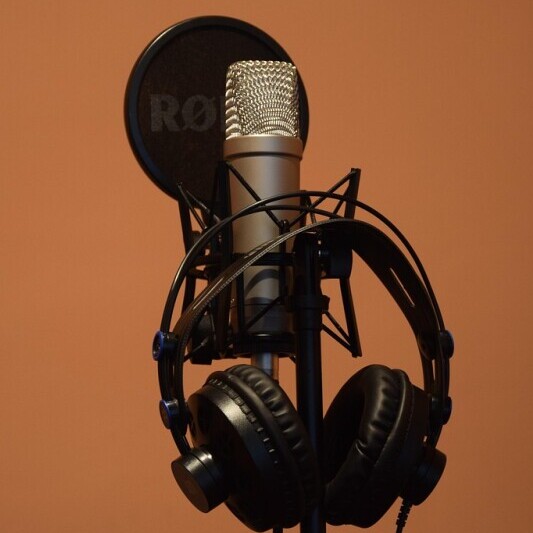ASMR, or Autonomous Sensory Meridian Response, might sound like a sci-fi term, but it’s all about relaxation and connection. Picture this: listening to a gentle whisper or the soft sound of pages turning and suddenly feeling calm. That’s ASMR at work.
Originally, ASMR was a small internet phenomenon, popping up in forums and niche circles. But today, it’s huge—an escape hatch for folks looking to unplug and destress. People worldwide are tuning into videos that feature everything from tapping on glass to hair-brushing sounds, seeking that unique tingling sensation.

What makes ASMR so appealing, especially in therapeutic settings? It’s about the personal, intimate experience it offers. When you listen, it’s like the speaker is right there with you, creating a space of comfort and safety. This connection is why therapists are starting to sit up and take notice.
ASMR’s popularity in therapy isn’t just a trend. Many find it genuinely helps with emotional and mental health challenges. As stress and anxiety become common struggles, the gentle escape of ASMR provides a welcome break. Whether it’s those sleepy whispers or the satisfying crunch of leaves, ASMR offers something different—a new way to calm the chaos.
Do Therapists Recommend ASMR? Insights from the Field
ASMR isn’t just a quirky internet trend anymore. It’s catching the eye of the therapeutic world too. Some therapists are intrigued by its potential as a tool for helping people relax and unwind. But what do the experts really think?
Many therapists have started to recognize how ASMR can fit into a larger toolkit for managing stress and anxiety. It’s seen as a complement rather than a standalone treatment. This means ASMR can be a useful part of a broader strategy for mental well-being.

Clients who’ve tried ASMR in therapy often report feeling more relaxed and better able to cope with stress. For some, the unique sensations ASMR triggers help shut out intrusive thoughts, if only for a time. That’s a big deal for someone struggling with constant mental chatter.
Yet, like anything in the world of therapy, it has its limits. Not everyone experiences ASMR in the same way. The tingles might not happen or might not be significant enough to make a difference. And that’s perfectly okay; it’s about finding what works best for each individual.
In the clinical world, research into ASMR is still emerging. Therapists advocate for more robust studies to fully understand its effects and potential benefits. Meanwhile, they remain cautiously optimistic, valuing ASMR’s ability to offer unique experiences of peace and calm in today’s hectic world.
Crafting the Perfect ASMR Voice: Tips for Creators
Finding that perfect ASMR voice can feel like a lifelong quest, but the good news is anyone can do it with practice. It starts with understanding the importance of your voice’s tone. A calming, soft voice can ease tension and invite relaxation.
Using your voice effectively in ASMR is all about hitting the right notes. Aim for warmth and clarity. This means speaking slowly, allowing each word to be heard and felt. Consider practicing with tongue twisters or reading aloud to get comfortable with different pitches and tones.

Don’t shy away from experimenting with whispering, soft-speaking, or even creative role-playing scenarios. Each style has its unique charm and can resonate differently with listeners. Variety keeps the experience engaging and enhances its soothing effects.
Want to improve your ASMR voice further? Try exercises focused on breathing and relaxation. Techniques such as deep belly breathing can help maintain a steady, calm voice even when recording for long periods.
Finally, listen to feedback. Your audience can offer invaluable insights into what works. They’re the ones tuning in for solace or stress relief, so their preferences hold the key to refining your craft. Embrace their suggestions as an opportunity to grow and connect more deeply.
ASMR as a Therapeutic Tool: The Mechanisms and Effects
ASMR has more to offer than just relaxation. For many, it serves as a valuable tool for personal well-being. People with stress, anxiety, or insomnia might find relief in the soft stimuli of ASMR, helping them find moments of peace amid chaos.
What’s happening when those tingles kick in? Research into ASMR suggests that the brain responds to these sounds by releasing chemicals like endorphins, which help improve mood and reduce pain perception. Think of it as tricking your brain into a natural high.

Individual experiences vary greatly. Some people report profound feelings of relaxation and emotional relief, while others may notice only subtle effects. It’s normal for ASMR’s impact to depend heavily on personal preferences and experiences—that’s what makes it so uniquely intriguing.
There’s a personal side to this story too. Countless individuals have shared testimonies of how ASMR provided a comforting escape during tough times. From dealing with the pressures of life to managing chronic stress, these stories highlight ASMR’s potential as a supportive companion.
While the scientific community continues to explore the whys and hows, ASMR has carved out a niche as a useful tool for those seeking alternative ways to improve mental health. It’s not a cure-all, but for many, it’s a soothing balm and an anchor in a stormy sea.
Key Elements of a Good ASMR Experience: What Really Works?
Creating a standout ASMR experience hinges on a few key elements. First and foremost, clarity in sound is non-negotiable. Listeners are often seeking nuanced audio experiences, where every whisper and rustle is crisp and distinct.
The voice used in ASMR plays a crucial role. A good ASMR voice is marked by its warmth and authenticity, inviting listeners to unwind without feeling unnaturally forced. Authenticity can make the difference between a forgettable session and one that lingers.
Your tech setup matters too. Investing in quality microphones can elevate the entire experience, capturing those tiny details that make ASMR compelling. Many creators swear by binaural, or 3D audio effects, which provide a surround-sound experience, enhancing the sense of presence.
Knowing what your audience enjoys and responds to enriches the ASMR journey for you as a creator. Engaging with your community can offer surprising insights and inspirations, guiding the evolution of your content.
Finally, remember that ASMR is all about comfort and connection. Whether it’s tapping, brushing, or softly spoken words, the goal is to create a personal, peaceful escape for each listener. The simplest sounds can often be the most profound when they resonate on a deeper level.